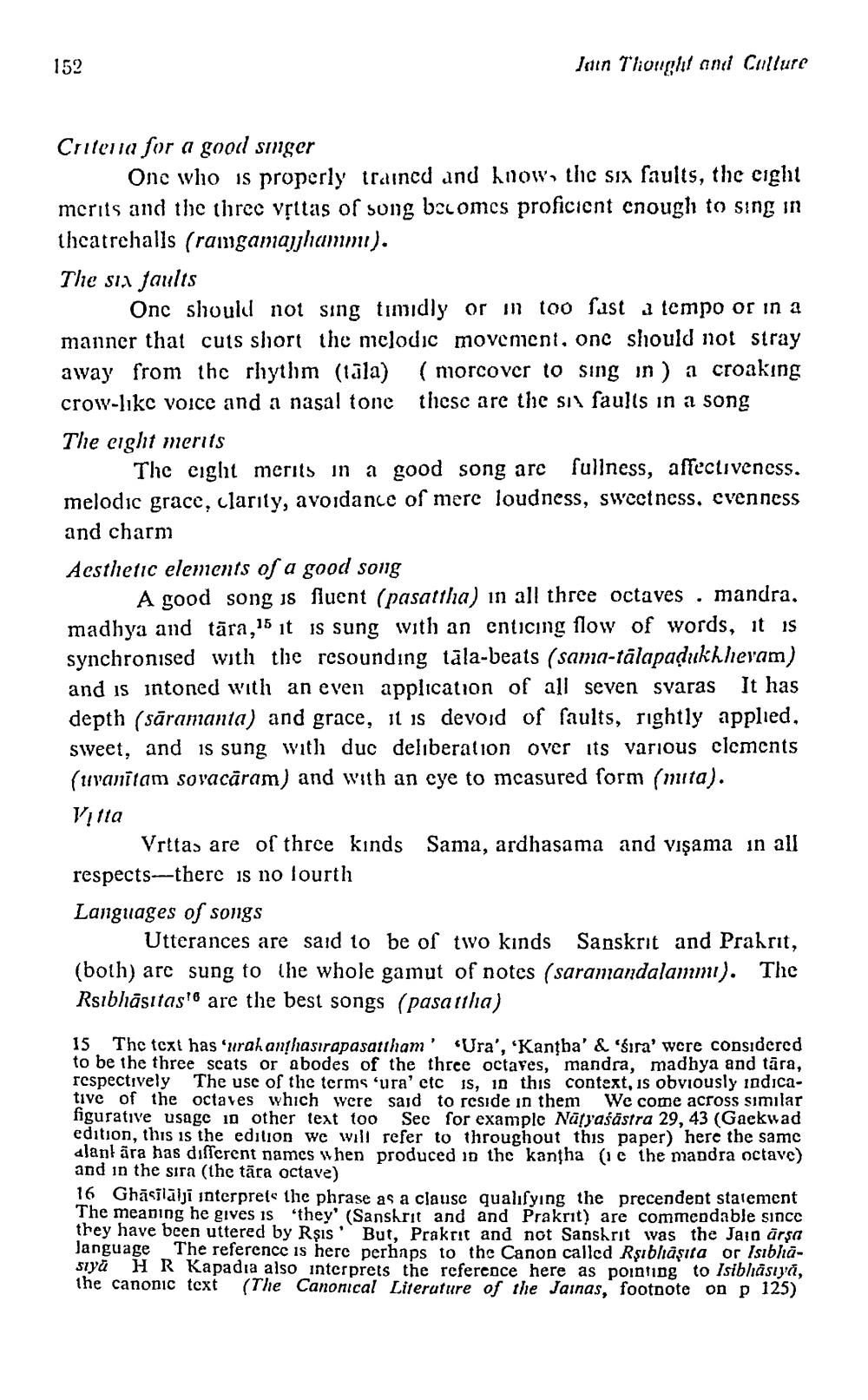________________
152
Jain Thought and Cullure
Critena for a good smiger
One who is properly trained and know, the six faults, the eight merits and the three všitas of song becomes proficient cnough to sing in thcatrehalls (ramgamajjhamımı). The sia faults
Onc should not sing timidly or in too fast a tempo or in a manner that cuts short the mclodic movement, onc should not stray away from the rhythm (la) (morcover to sing in) a croaking crow-like voice and a nasal tone these are the si\ faults in a song The eight merits
The eight merits in a good song are fullness, affectiveness. melodic grace, clarity, avoidance of mere loudness, sweetness, evenness and charm Aesthetic elements of a good song
A good song is fluent (pasattha) in all three octaves , mandra. madhya and tāra, 15 it is sung with an enticing flow of words, it is synchronised with the resounding tāla-beats (sama-tālapadukhhevam) and is intoned with an even application of all seven svaras It has depth (sāramanta) and grace, it is devoid of faults, rightly applied, sweet, and is sung with duc deliberation over its various clements (irvanitam sovacäram) and with an eye to mcasured form (mita). Vitta
Vrttas are of three kinds Sama, ardhasama and vişama in all respects---there is no lourth Languages of songs
Utterances are said to be of two kinds Sanskrit and Prakrit, (both) are sung to the whole gamut of notes (saramandalanımı). The Rsıbhāsıtas' are the best songs (pasatha)
15 Thc tcxt has 'urahanthasirapasattham' Ura', 'Kantba' & 'śıra' were considered to be the three scats or abodes of the three octaves, mandra, madhya and tāra, respectively The use of the terms 'ura' etc is, 10 this context, is obviously indicative of the octaves which were said to reside in them We come across similar figurative usage in other text too Sec for example Nāfyaśāstra 29, 43 (Gackwad edition, this is the edition we will refer to throughout this paper) here the same alanlara has different names when produced in the kantha (1 c the mandra octave) and in the sira (the tāra octave) 16 Ghāsilūlji interprets the phrase as a clause qualifying the precendent statement The meaning he gives is "they' (Sanskrit and and Prakrit) are commendable since they have been uttered by Rşis' But, Prakrit and not Sanskrit was the Jain ārsa Janguage The reference is here perhaps to the Canon called Rşıblaşıta or sibliasiyū H R Kapadia also interprets the reference here as pointing to Isibliasiya, the canonic text (The Canonical Literature of the Jainas, footnote on p 125)




